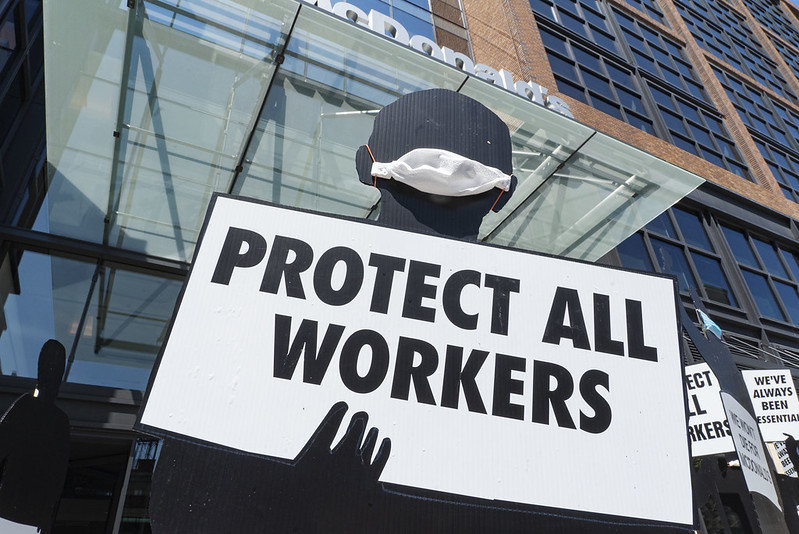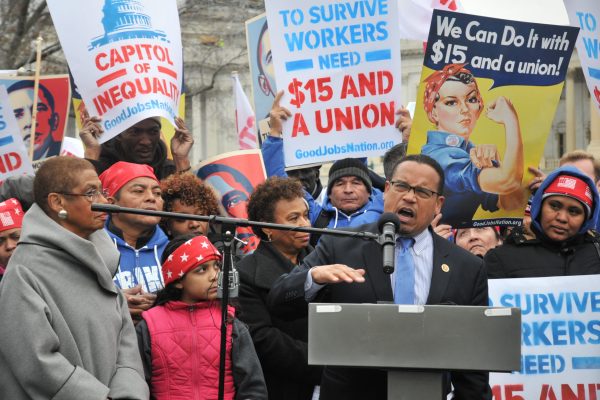On Labor Day we recognize and celebrate the contributions of workers to American society. But recognition and celebration are far from sufficient. In 2020 the twin crises of COVID-19 and racial injustice have exposed deep fault lines in our economy—an economy in which, even in times of economic expansion, many adults struggled to make a decent living while working full-time. Now, during the downturn in the wake of COVID-19, about 12 percent of Americans recently surveyed by the U.S. Census report not having enough food to eat, and more than a quarter face housing insecurity. What’s more, far too many of those working are at risk of contracting COVID-19 on the job; in the health care sector alone, more than 900 U.S. workers have died of COVID-19. These are frightening times for many American workers and their families.
As social scientists, we know from research findings that workplace conditions can be improved for Americans in ways that will benefit society as a whole. And as business school professors we are seeing in many of our students a new determination to help shape a fairer, more equitable, and sustainable business world. Now, in the most economically dire Labor Day for workers in our lifetimes, we call on leaders across society—in business, labor, government, and education—to come together and build a better future for U.S. workers and for all of American society. Here are six urgent changes we can make:
- Through labor law reforms, empower the workforce and treat workers and their representatives as legitimate, valued partners. There is growing recognition among researchers that the decline of the labor movement in the United States has had significant negative economic consequences—including wage stagnation, increased inequality, and a substantial gap between workers’ desire to have a say at work and their actual influence. The pandemic makes these issues more visible and urgent; we need a fundamental transformation in U.S. labor law and policy, much of which dates from the 1930s and is hopelessly out-of-step with today’s economy.
- Give workers representation on corporate boards. The Business Roundtable, an organization of CEOs of leading companies, finally has recognized that shareholders aren’t the only stakeholder group whose interests corporations should serve. Now it’s time to put the group’s new stance on corporate governance into practice by giving workers representation on boards—as is already done successfully in a number of European countries. Although some scholars have argued that giving workers greater influence on corporate policy could lead to lower investments in capital goods, new research finds that’s not the case: if anything, businesses with workers on the board show higher rates of capital formation.
- During a time of rapid technological change, incentivize companies to invest in workers’ development and involve workers in the change process. The U.S. tax code motivates companies to favor capital investments over investments in workforce development—an incentive that too often yields automation that replaces workers rather than complements them. This is counterproductive. Decades of research have shown that automation tends to create the most advantages when it is part of a high-performance work system where workers are well trained and engaged; such workers are more productive and can earn more. As a recent experiment in Illinois has shown, initiatives that help businesses implement this worker-centered kind of approach can yield benefits to both companies and their employees.
- Provide all workers with paid medical leave and support for health and safety. This pandemic has made clear that the United States can no longer afford to be the only advanced economy except South Korea that does not require that all employees receive paid medical leave. Forcing workers into unsafe conditions when they are unable to afford to stay home is both medically and morally unsound, and the public health consequences are disastrous—as are lax approaches to regulating workplace safety. Even without a pandemic, research has shown significant links between factors such as workplace stress, overload, unpredictable scheduling and negative effects on worker health and well-being—with significant costs for employer, individuals, and society. Fortunately, work systems can often be redesigned in ways that benefit both companies and employees in the long run.
- Work to eradicate structural racism and ensure that everyone may live without fear and work with dignity.We need to acknowledge the structural racism that remains in many of our organizations and institutions today. In the wake of the most recent murders of Black people by law enforcement officers in the United States, and in a time of widespread antiracism protests, it is clear that we all, regardless of race, have to step up and do the work to eradicate racism, both in our organizations and society at large. This is not easy work; research has shown, for example, that even attempts to compensate people within organizations fairly, based on their merit, can backfire for certain demographic groups and that managers from different background often have different perspectives on evaluating merit, with implications for workplace inequality. But the task remains urgent and essential, and part of our antiracism work should involve developing an inclusive vision of our shared future. We need to create a more inclusive social contract and ensure the opportunity for everyone in our country to have prosperous, healthy, and successful lives regardless of their demographic or class background.
- Recognize the potential of America’s low-wage workers—and the intersection between race and low-wage work.The national epidemic of low-paying work hurts workers of all races, but it has a disproportionate impact of people of color, who are more likely to hold low-wage jobs. Building better jobs for low-wage workers will benefit broad swathes of the workforce, but it can also be a step toward ameliorating racial inequality. Consider the long-term care workforce. Research shows that home health aides and nursing home aides are disproportionately women and people of color whose caregiving work is poorly paid, and they are often afforded little respect by the medical establishment they work with. But recent research also suggests a better way: if we invest in these workers and train them to take on more patient care tasks, they could simultaneously earn more, save the health care system money, and lead to better medical outcomes for their patients.
This kind of proactive approach to workforce development illustrates a positive way forward for the United States. Thoughtful industry-specific approaches that lead to better jobs for low-wage workers, including those from groups that have historically been marginalized and discriminated against, will yield a more prosperous, productive and equitable society overall. We teach our students how to manage successful businesses that also provide good jobs for workers; our research shows it is possible to do this. Now is the time to make this approach the norm across the economy: that will be true cause for celebration.








